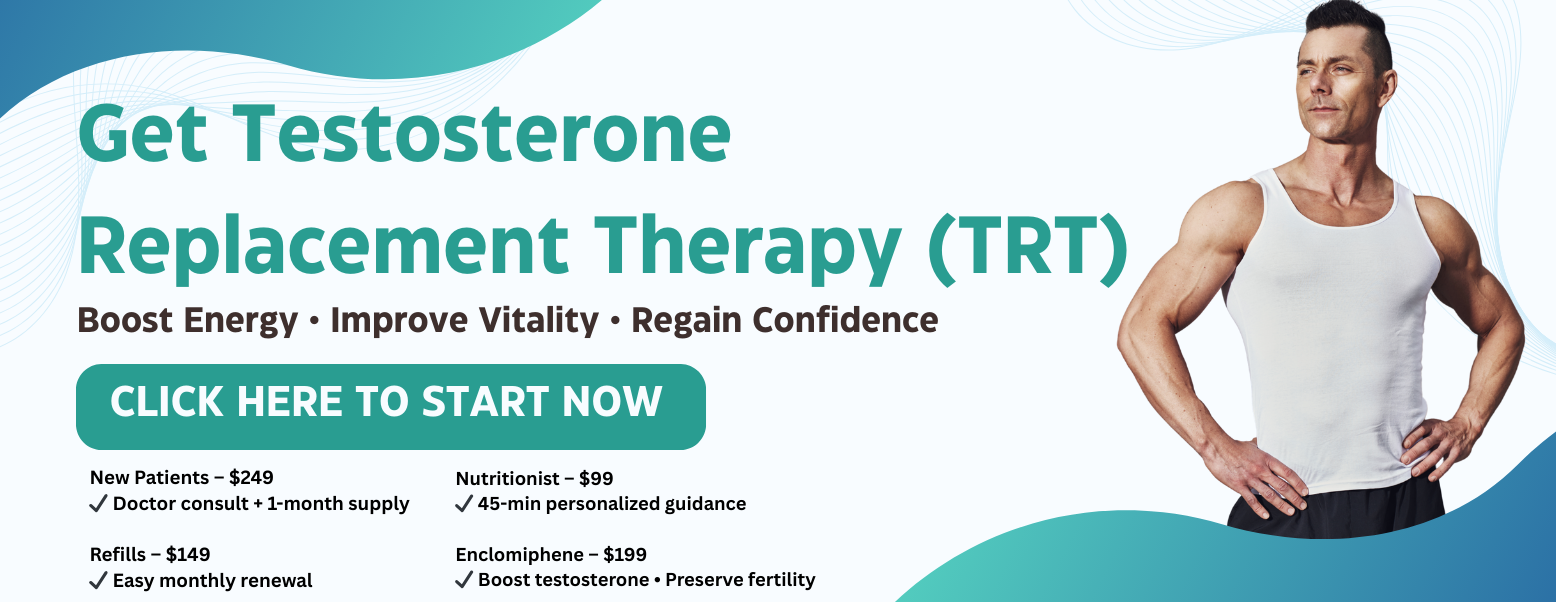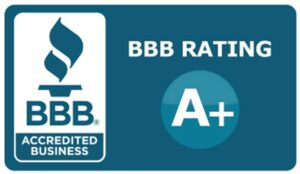There are more choices for men to treat low testosterone symptoms now than there used to be. With Testosterone Replacement Therapy (TRT), people facing hormone deficiency can regain energy, mood and improve their general health.
Many men ask about TRT pricing before starting treatment. Knowing what you'll pay helps you plan and choose the best care option. This guide breaks down all TRT expenses and explains what affects the final cost.
What is Testosterone Replacement Therapy?
Doctors use TRT when men are found to lack enough testosterone in their bodies. Men rely on testosterone to build strong muscles, maintain healthy bones, feel good and have energy.
Don’t Wait, Reclaim Your Vitality – Click here to Book Your TRT Consultation Now!
Low testosterone causes many problems. Men feel tired all the time, gain weight easily, lose interest in sex, and feel sad or angry. These symptoms get worse without treatment.
Doctors prescribe TRT in different ways. Some men get shots, others use gels or patches. A few choose pellets placed under the skin. The best method depends on what works for your body and lifestyle.
How Is TRT Administered?
There are many types of TRT and every kind affects the body differently. Your doctor will let you know which insoles fit your lifestyle, are affordable for you and suit your requirements.
- Intramuscular Injections: These shots are given directly into your muscle muscle every one or two weeks. Testosterone cypionate and enanthate are common types. They work well but cause your hormone levels to go up and down. You feel great right after the shot, then energy drops before the next one. Many men split their dose into two smaller shots each week to feel more steady. The injection site might hurt or swell after each shot.
- Topical Gels: You put gel on clean skin every day, usually on your shoulders or arms. Gels keep hormone levels steady throughout the day. You must cover the area for several hours so the gel doesn't rub off on other people.
- Transdermal Patches: These stick to your skin and release testosterone slowly over 24 hours. You put them on your back, stomach, or thigh. They work well but cause skin redness and itching in many men.
- Subcutaneous Pellets: A doctor puts these tiny pellets under your skin during a quick procedure. They last three to six months and give steady hormone levels. You don't need to do anything daily, but the procedure costs more and requires a small cut.
- Oral Testosterone: You take pills twice a day with food. They're easy to use but cost more than other options and aren't used as much.
- Nasal Gel: You put gel in your nose three times daily. This method copies your body's natural hormone pattern and might help keep your fertility better than other types.
- Enclomiphene: This isn't testosterone but a pill that tells your body to make more of its own hormone. It works well to boost testosterone but causes fewer side effects than actual testosterone.
Every TRT method needs regular blood tests every three to six months. TRT requires ongoing care and adjustments between you and your doctor to get the best results with the fewest problems.
How Much Does TRT Cost Per Month?
TRT prices change a lot depending on many factors. Some men pay only $30 each month, while others spend more than $500. Your final cost depends on which treatment you choose, where you buy it, and if insurance helps pay.
Monthly TRT Cost Range
TRT costs usually fit into three main groups:
- Budget Option ($30–$100 per month): This price applies to basic testosterone shots, especially when you buy from compounding pharmacies that make custom medications.
- Standard Option ($100–$250 per month): Most men pay somewhere in this range. It covers brand-name testosterone shots, gels, or patches. Online TRT clinics often charge prices in this range too.
- Premium Option ($250–$500+ per month): This includes testosterone pellets, special brand-name drugs, and complete TRT programs with extra medications and frequent doctor visits.
Cost Variations by Treatment Type
Your method of taking testosterone affects the regular amount you spend. The costs, benefits and drawbacks of each method are not the same.
Testosterone Injections
- Cheapest choice for most men
- Generic versions cost $30–$100 per month
- Brand-name options cost $100–$200 per month
- You get shots every one to two weeks
- You need needles, syringes, and sometimes other medications
Testosterone Gels and Creams
- More expensive than shots, usually $150–$400 per month
- You apply them to skin every day
- They can transfer to other people through skin contact
- Your body might absorb different amounts, so doses may need changes
Testosterone Patches
- Cost between $200–$500 per month
- Simple to use but may irritate skin
- You apply them once daily
Testosterone Pellets (Subcutaneous Implants)
- Cost $500 to $1,500 every three to six months
- A doctor puts them under your skin in a small procedure
- They give steady testosterone levels for months
What Happens When You Choose TRT?
TRT doesn't change everything overnight. Your body needs time to adjust to better hormone levels, and benefits show up slowly.
Week 1–2: Initial Changes
Getting better sleep means you start the day rested. Lots of energy is noticed in the morning, especially after a good night’s sleep. You experience less mood swings and become less irritable. Reasoning and understanding also become sharper.
Week 3–6: Building Momentum
Morning erections come back, and you want sex more often. Energy stays good throughout the day instead of crashing. Workouts feel easier, and you recover faster after exercise. Your memory works better, and you can focus longer on tasks. Anxiety goes down, and emotions feel more balanced.
Month 2–3: Substantial Progress
Muscles start looking more defined, especially if you exercise regularly. Body fat begins to decrease, particularly around your stomach. Sex drive and performance improve a lot. Your mind feels sharper, and you think more clearly than before. You feel more motivated to reach your goals at work and home.
Month 4–6: Full Benefits
You gain three to six pounds of muscle with proper training. Body fat drops by two to four percent with good eating habits. Energy stays high all day long. Sexual function returns to normal levels. Your brain works at its best, and emotions stay stable.
Long-term (6+ months)
Body composition keeps improving with continued effort. Energy and mood benefits last as long as you stay on treatment. Sexual function stays optimal. Overall quality of life gets better in all areas.
Everyone responds differently to TRT. Some men feel better within days, while others need two to three months to see big changes. Your starting testosterone level, age, health, diet, exercise, and treatment method all affect how fast you improve.
Blood tests every three to four months during your first year help doctors adjust your dose and timing for the best results.
Factors That Affect TRT Costs
Many things change how much TRT costs each month:
1. Type of TRT Treatment
- Injections: The most common choice and usually the cheapest option available.
- Patches and Gels: Cost more than injections but offer more convenience for daily use.
- Pellet Implants: Need fewer treatments but cost more money upfront for each procedure.
2. Clinic Location
TRT prices vary by location. Some areas charge more for medical care than others. Urban areas often cost more than rural locations.
3. Customization of Treatment
Personalized treatment plans need extra lab tests and more doctor visits. These add-ons increase your total cost but may improve results.
Conclusion
TRT costs in 2025 represent more than just monthly expenses. You're investing in better energy, improved health, and a higher quality of life.
Starting TRT or switching to better care requires choosing a provider with clear pricing and expert medical support.
At TheKIF.com, we simplify your health journey with affordable, physician-led TRT programs made for today's men:
- Free Consultation – $0: Speak with a hormone expert without any commitment. Get personalized health advice at no cost.
- New Patient TRT Plan – $249: Get one month of TRT plus a telemedicine consultation to start your treatment with confidence.
- TRT Refills – $149/month: Keep your treatment consistent with our monthly refill program. Expert care delivered to your door.
- Monthly TRT Subscription: Automatic monthly delivery with telemedicine check-ins included. Professional support throughout your entire journey.
Stop guessing about TRT costs and choose transparent pricing with expert care. Book your FREE consultation today at TheKIF.com!
Frequently Asked Questions (FAQs)
1. How Do I Know If I Really Need TRT?
TRT might help if you have ongoing symptoms and blood tests show low testosterone. You need at least two morning blood tests showing below-normal levels before starting treatment. A doctor should also check for other causes of your symptoms and decide if TRT is the best choice for your situation.
2. Will TRT Make Me Aggressive Or Cause Hair Loss?
While TRT does not always cause aggression, shifts in hormones due to the therapy can impact one’s mood, mainly if testosterone rises quite quickly. Balance matters more than just boosting levels. TRT might speed up hair loss in men who would lose hair anyway due to genetics. If baldness runs in your family, talk to your doctor about prevention options before starting treatment.
3. Can I Stop TRT Once I Start?
You can stop TRT, but don't quit suddenly without medical help. Stopping too fast can make your natural testosterone drop very low, causing worse symptoms like extreme tiredness, mood swings, and no sex drive. Your body needs time to start making its own hormones again, and some men need medications to restart natural production. Always work with a doctor when stopping TRT.
4. Is TRT Covered by Insurance?
Some insurance plans pay for parts of testosterone therapy, but coverage changes a lot between companies. Many patients choose to pay directly for better control, convenience, and access to specialized care that insurance doesn't cover.
 Since 2021, Kif offers a streamlined platform to get a medical marijuana card online. We have served more than 45K patients across the United States. Sign Up Now to get the right to use medical cannabis for your health condition without any delay.
Since 2021, Kif offers a streamlined platform to get a medical marijuana card online. We have served more than 45K patients across the United States. Sign Up Now to get the right to use medical cannabis for your health condition without any delay.
























